Subtotal: $
Checkout-

What Lies Beyond Capitalism?
-

The Interim God
-

Robin Hood Economics
-

Is Christian Business an Oxymoron?
-

Not So Simple
-

Comrade Ruskin
-

An Excerpt from The Heart’s Necessities
-

Exposed
-

Who Owns a River?
-

Editors Picks Issue 21
-

Working Girls
-

Was Martin Luther King a Socialist?
-

Gustav Landauer
-

I Begin with a Little Girl’s Hair
-

Kochel: Waterfall I
-

Covering the Cover
-

Anabaptist Readings on Community of Goods
-

The Economics of Love
-

Readers Respond: Issue 21
-

Family and Friends Issue 21
-

The Bronx Agrarian

The McDonald's Test
Learning to Love Back Row America
By Chris Arnade
July 3, 2019
Available languages: 한국어
Once a Wall Street banker, Chris Arnade spent three years crisscrossing the United States to visit “the places you were told not to go to.” His travels took him from the Bronx to the Ozarks to East Los Angeles. He shares what he learned in Dignity, a searing new book of essays and photojournalism. Plough’s Peter Mommsen caught up with him to talk about fast-food joints, storefront churches, meritocracy, and whether to give cash to panhandlers.
Plough: What pushed you into starting this hugely time-consuming project?
Chris Arnade: It started in 2012 when I was a bond trader for a prestigious Wall Street bank. I’d been doing that for twenty years, and wanted to see more of the world. So I started taking long walks through New York City. And soon, I found myself going to places that people in my social group told me not to go to.
One of those was Hunts Point, a neighborhood in the South Bronx that has a reputation as a center for drugs and prostitution. I ended up spending three years there. I became very close to homeless people, sex workers, addicts – some whose stories appear in the book. It was simply my attempt to listen to people no one else would listen to.
In 2015, I decided to branch out to other places across the United States that are disregarded or talked negatively about. Places like Lewiston, Maine, or Bakersfield, California, or El Paso, Texas.
In that time, you covered over 150,000 miles. What motivation kept you going?
One motivation was political: a sense of outrage. When you’re born into Hunts Point you have a lot working against you. It seems like our entire legal, economic, and cultural system is rigged against these kids. Yet they are no different than individuals you will find in the Upper East Side – they’re not dumber, they’re not any less hard-working. Here I was, someone who had lived in New York for twenty years in a comfortable life, counting myself a liberal, in this town where there is awful poverty and injustice. I wanted to find out if the same was true elsewhere.
The second motivation was personal. The first year or two that I was working on this project was surreal, since I was still working on Wall Street. Weekends or evenings I would go into “rough” neighborhoods with my camera and talk to people. Ultimately I chose to leave my job and do what I’m doing because I was – I am – happier. It’s a very selfish reason. But I was more comfortable around the people in Hunts Point than I was with people on Wall Street.
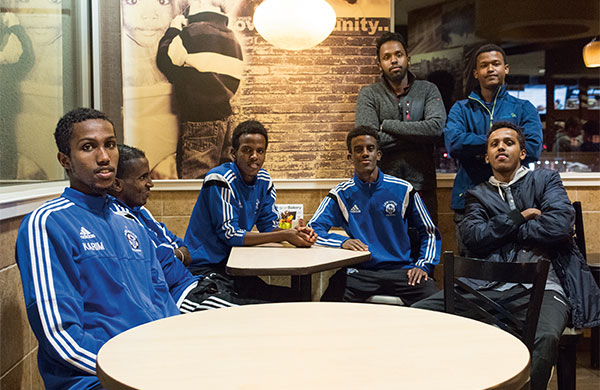
High school soccer team in Lewiston, Maine, which has a large Somali American community
When you visited one crumbling Missouri town, the locals greeted you with the words, “You must be here to write about crystal meth.” How does a book about poor communities avoid voyeurism?
The phrase people use for it is “poverty porn.” My comeback is, “I think we need a little more poverty porn. We have enough luxury porn.”
Of course, there is a bad way to write about people in these communities. I think it’s entirely about methodology and intent. I go into communities sometimes without reading anything beforehand, so as not to bring along preconceived notions.
One place I visited was Prestonsburg, Kentucky. The center of that community is a plaza with a McDonald’s and a Walmart. Each day I was there, I saw a gentleman smoking cigarettes on a picnic table outside; he worked a night shift at one of the stores. Each day he’d refuse to talk. After twelve days, he said, “All right, you can take my picture.” We chatted, and he gave me some quotes, and we laughed. At the end, he said, “Don’t just tell the story about how Prestonsburg is filled with drugs and addicts. I hope you tell the story about how we’re good people, too.”
That is my intention with this book. Across all the communities I visited, which were so different, I found that same desire for dignity.
Along the way, you visited eight hundred McDonald’s restaurants. Why?
My old self, my successful bond-trader self, used to look at McDonald’s as an embarrassing place that I’d never go to. But when I started visiting Hunts Point, I found myself eating at McDonald’s all the time. It was one of the few public places in the community that worked.
I became close friends with some homeless heroin addicts, and their life in many ways revolved around McDonald’s. It’s where they go to the bathroom to clean up. It’s where they can plug in their phone and charge it. It’s where they can just sit quietly for an hour and not be bothered, to escape the heat or cold. It’s also where they get cheap food. I may not ethically respect the food, but it’s cheap and it tastes good. For people who don’t have much money, that counts for a lot. There was a real sense of community there.
I began to see that all across the country, the McDonald’s restaurants were in fact community centers. In towns where things are really dysfunctional, where government services are failing and non-profits and the private sector are failing to help people, McDonald’s is one of the few places that still is open, still has a functional bathroom, and the lights are on.
Eventually I came up with what I call the McDonald’s test. The broad thesis of my book is that our society sorts people into what I call the front row and the back row – the privileged class to which I used to belong, who are financially secure and live in safe neighborhoods with good schools and public services – and everybody else. The test is to ask a person: how do you view McDonald’s? In my experience, the answer usually reveals whether someone belongs to the front or back row.
I understand the anti-McDonald’s sentiment – what these vast global corporations have done in this intensely competitive, intensely materialistic world. What these companies care about is coming into a neighborhood, making money, and taking it out, and of course McDonald’s is also guilty of this.
But the reality is that McDonald’s is important in poor people’s lives. People really want a sense of community – they crave the social so much that they’ll form communities in places that are meant to be entirely transactional. McDonald’s, of course, is designed to get you in and get you out as quickly as possible. But what I found were old men’s groups, old women’s groups, Bible studies, chess games.
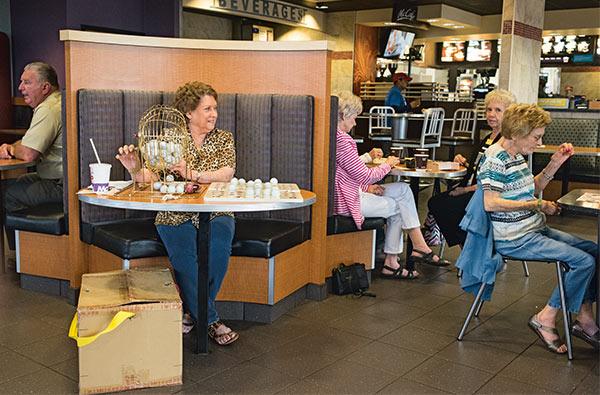
Bingo day in a McDonald’s in Louisiana
You also visited many churches. As an atheist, what was that like?
I was certainly an atheist when I began; it’s more complicated now. Initially, I went to church for the same reason I was going to McDonald’s: it was where the people I was speaking to were going. I didn’t discriminate, I just went to whatever church or mosque was there, whatever faith was reflective of the community.
Like McDonald’s, the churches worked. They were often the only institutions that were lit up and functional; usually they were storefront operations. You’d go down a street that was boarded up, derelict buildings, and then there was a church. Its doors weren’t closed.
There aren’t many success stories in my book – there’s almost nobody who got out of a negative lifestyle. The only people who succeeded did it through faith – through the church. And so I had at first a grudging respect, and then a full-blown respect for what churches are doing.
Many of the people you met who lead lifestyles at odds with traditional faith – a transsexual prostitute, for example – still put the Bible at the center of their lives.
You go into a crack house, you’ll find a Bible or a Quran. There will be all sorts of crazy things going on, but they’ll be religious. Part of that’s outreach; the religious community does a wonderful job of serving the poor. But also, they find within the Bible, and within churches, a community that gets them. Yes, there are strains that judge them, but most of these churches don’t ask much. They say, “Try to live this lifestyle and we’ll accept you.”
I also think that what they see in the Bible is an acceptance of failure, or at least the recognition that everybody’s a sinner and that we’re all fallen and that we don’t really have this all figured out. And that there is something out there greater than us. If you’re living in a crack house and you see the vast injustices of this world at a visceral level, the idea that this is all that exists isn’t appealing at all.
People like myself – wealthy, educated, scientific – have removed ourselves from the evidence of faith. I think it’s much easier to see the Bible as something important if you’re living on the streets and you understand mortality, you understand failure, you understand humility.
How did your travels change your views on success and meritocracy?
We’ve decided to sort ourselves by education – the idea is that being educated is the most important thing in life and that if you fail at that, it’s your fault. Even in polite company, one can make fun of someone for not doing well at school. It’s not just that we have a system that rewards education, it’s that we have a very narrow definition of what being smart is.
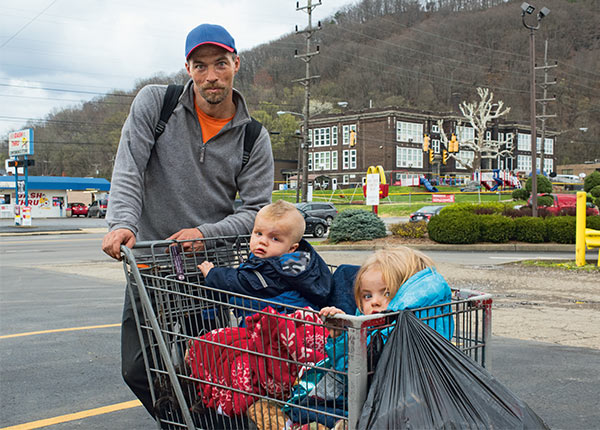
Portsmouth, Ohio
This mindset is deeply materialistic, and it depends on an idolization of credentials, usually a university degree. Success is then defined by how much money you make and how many credentials you collect.
The problem with defining success like this is that, though it’s easy to measure how much education or money someone has, it’s very hard to measure the value of being a good parent or of deciding to stay in your hometown and to spend your life contributing to it. With a meritocratic mindset, when we fail to find things we can put numbers on, we tend to overlook their value.
What do the alternative kinds of success look like?
When I was spending time in East Los Angeles, which is largely a Mexican American neighborhood, there was a McDonald’s I used to go to in order to write up my notes. I noticed a young woman in there every night. I asked, “Why are you here every night?” She said, “I need the Wi-Fi. We don’t have money for it in our home.” She was going to a community college nearby.
When she found out I was from New York, she told me she’d love to go to school there. I offered to put her in touch with good schools, but she said she couldn’t. It turned out she was the oldest daughter of a family of six, and she was the translator for the family.
By the usual standards of success, she was foolish for turning down the opportunity. But I don’t know if that’s right. She wanted to be there for her family.
In Reno, Nevada, I met an African American teenager who had turned down a chance to go to an out-of-state university and went to a local community college instead. His main reason was that his mom was sober after being an addict for twelve years, and he needed to be there for her.
I happen to think those two children made the right decision. If you had told me this story ten years ago, I’m not sure I would’ve thought so. There’s a sense that we’re all supposed to be independent franchises that just move wherever we want. There’s no sense of place.
What lesson was hardest for you to learn?
When I started out on this project, I wanted to help the drug dealers and sex workers in Hunts Point. After a couple of years, I realized that I didn’t understand the realities of the people I claimed I was helping.
I learned that the reality of the educated elite is just so different than the reality of the working class. It goes from what you think to what you eat to where you shop to who you interact with. That removal, that separation means, over time, you still don’t understand each other. The educated elite don’t understand the working class and vice versa. It goes both ways, but it’s the educated elite who have removed themselves.
Take Walmart. There are a lot of reasons not to like Walmart, but if you want to get to know the immigrant community in a town, start with Walmart. Of course, many middle-class people do go to Walmart, but they generally don’t go at two in the morning, which is when it can be most interesting. A lot of Walmarts have this wonderful policy where they let people park overnight, so people who are homeless will sleep in their cars in Walmart plazas, and then use the Walmart bathrooms in the morning. I found these stores to be one of the best places to interact with people who are often invisible.
Educated people, what I call the front row, don’t understand such details of life. But they also don’t understand the way people in the back row think, what they emphasize – which is often family, place, and faith, not career and credentials.
I’m afraid that the gap is now so large that we speak two different languages. It took me a while to be able to translate between the two.
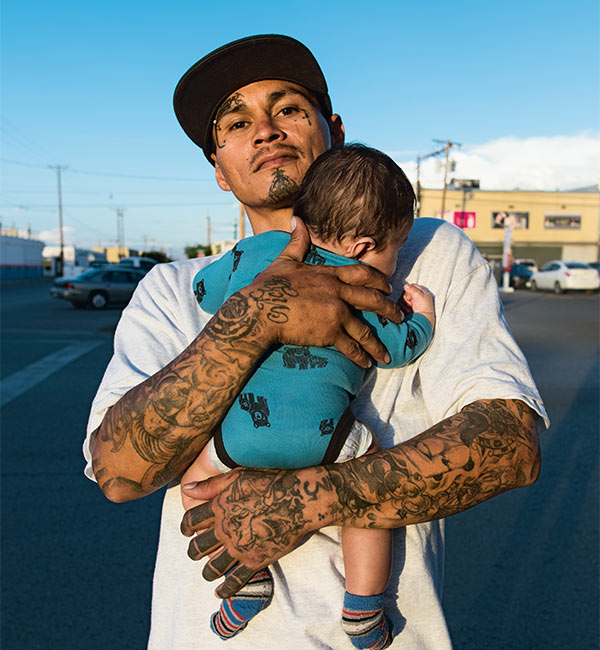
Three hundred yards from the US–Mexico border in El Paso, Texas
Immigration has become a political rallying cry in most Western countries. Critics of immigration claim that it dilutes cultural identity and so weakens community, especially in working-class areas. Did you find that to be the case?
Nothing could be more wrong than that statement. Often, the only thing that’s working in these towns is the immigrant community. Lewiston, Maine, was all white and Christian up until 1998 – now it’s 15 percent black and Muslim after the arrival of Somali immigrants. They’ve taken an empty, abandoned downtown and turned it into a vibrant part of town.
For me as a Southerner who has spent the past decades in New York, it was often a shock to visit small southern towns and find a thriving Mexican American community. Often they’re the only ones running family-owned restaurants and businesses in neighborhoods that had emptied out.
You can’t deny, though, that the speed of change in these towns is scary to many old-timers. Communities that have had a strong sense of local identity for two hundred years are suddenly turned on their heads. Many of these communities have suffered a lot, and immigrants can become an easy scapegoat.
For example, in Lewiston I met a working-class white guy, a Vietnam veteran. Things haven’t been going well for him for thirty years; he lives off and on in Section 8 housing; he’s in and out of addiction. Every week, when he goes to get his food distribution, he has to wait in line – and in recent years he’s had to wait longer, because half the people in front of him are Somalis. I won’t repeat the words he said. They were not pleasant, but it’s easy to see how he got there. Immigration, to him, is easy to blame.
You suggest that one thing which may have stayed more the same than people would like to admit is racism.
There’s awful racism in the United States, which cannot be denied or diminished. What’s forgotten, though, is that the most progressive towns are often the most segregated. We tend to focus on the ugly incidents of racism that happen among the white working class and ignore the racism of the elites, which is less overt because it’s structural. It’s a matter of zoning laws, of where the best schools are, who is more likely to be arrested or imprisoned, where good jobs are available.
My visit to Milwaukee, which is well-known for its progressive politics, illustrated this to me. Historically, the African American community was intentionally confined to a tiny neighborhood in the city, and it’s largely still concentrated there. Most African Americans came there in the 1940s and 50s from the same part of Mississippi. I spent a lot of time with the older members of this community, who had grown up in the segregated South and then moved north. They repeatedly told me, “The racism here isn’t any better than it was there.” Milwaukee was already electing socialists to the US Congress a century ago. But these men told me, “Look, the racism is different here. The racism in the South was in your face. Here, it’s behind your back – they talk the talk but don’t walk the walk.” In their eyes, they were still confined to the secondary jobs and to a secondary neighborhood, with high barriers keeping the young people in their place.
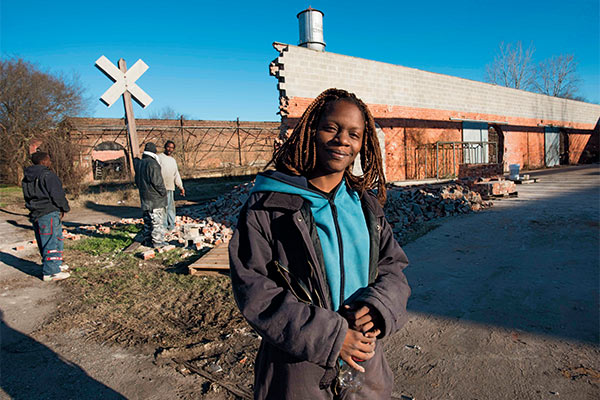
Day laborer in Selma, Alabama
One of the most haunting sections in your book describes Selma, Alabama, which is best known for its role in the civil rights movement. You write how you found beautifully kept historic monuments to the Selma Marches of 1964 surrounded by crumbling housing projects.
I love Selma – people were very warm to me there. But they aren’t happy. There are nice parts of Selma, but they’re small and contained. The reality for most people there, for most African Americans, is disenfranchisement, not only legal but economic. In all the places I visited, I never saw people carrying firearms or dealing drugs so openly and nonchalantly as in Selma.
There’s an anger, a justified anger, among the people there, and a quiet bitterness and cynicism about whether political action can fix anything. (Of course, Alabama has made it very easy for blacks not to vote – in fact, they’ve done everything they can to make them not vote.) The reality of Selma today suggests that the civil rights victories of the 1960s were largely symbolic. Far more needs to be done.
You said earlier that at first you wanted to help people, then learned you had to understand them first. But how do you help someone who seems trapped in a negative pattern?
I think the best thing you can do is provide moments of dignity – listen to them, treat them like a normal person. If someone needs a clean meal, give them a clean meal; if someone needs to go to the hospital, take them.
I often get asked by people, “Well, there’s a homeless person near me. What should I do?” Just treat him or her like a normal person. Sit down and talk. Invite them for coffee, genuinely. If you have shared interests, explore them. Don’t be fake friendly.
One of the things I learned to do is hug everybody. I don’t care how dirty they are – I’ve hugged people who haven’t bathed in two or three months. It’s a sign that you’re willing to treat them like a normal person. You should treat everybody with dignity, but in particular for people who are on the cusp, it’s the one thing that may matter most.
Does that include giving money to panhandlers?
Yes. I always keep a five-dollar bill in my pocket – people who beg often look at me funny because I’ll take out one thousand dollars from my wallet, all in fives. Most drugs cost nine dollars, so I give less than that. If I hand somebody five dollars and they ask for four dollars more, I know exactly what’s going on. I may invite them to McDonald’s and buy them a meal.
What do you hope people will do after reading your book?
Look at what’s of value beyond material things. Many people are mad about the world, but there’s actually never been a better time to craft a life beyond capitalism than there is now.
In Hunts Point, I got to know an addict – her name was Millie. She died. I only know this because she went missing and I spent a bunch of weeks tracking her down. In New York City, if you die without paperwork or identification, you get sent to Hart Island, where a million bodies are buried. You’re put in a plywood box, put into a trench, and buried by inmates from Rikers Island. People generally aren’t allowed to visit the grave.
When I finally learned that Millie was dead and where she was buried, it started me thinking. There’s a saying: “You don’t really die until people stop talking about you.” If that’s true, if you’re buried on Hart Island in a plywood box with no way to visit, you’re going to die much quicker. Your memory’s just going to disappear.
So I ended up helping get Millie’s body exhumed and properly buried. I went into it thinking, “As an atheist, why am I doing this? Who cares where you’re buried? You’re dead.” But this symbolic action mattered immensely to Millie’s street family. There was a memorial you could visit. There was a gravestone. Her memory was going to stay on a little bit more.
So don’t fetishize poverty. But be a little bit more willing to go into the neighborhood people told you not to go into. Take time to listen to people. Give them respect.
Interview by Peter Mommsen on April 30, 2019.

Sign up for the Plough Weekly email
Already a subscriber? Sign in
Try 3 months of unlimited access. Start your FREE TRIAL today. Cancel anytime.
































Lori June Houle-Pascador
To Chris Arnade, Came across your "McDonalds test" interview in Plough magazine. I too have seen those whom I call coffee clutching and wrote a Note to self: blog about groups of men having coffee at McDonalds... in Mio, in Aplena... where else? I know of some who gather in Lewiston Tuesday early at the Kettle or the morning on Wednesday at the Villager. Men seeking the conversation and company of men. Ladies in red hats and purple sweaters at the Dinner Table or the luncheon in Atlanta. Ladies gather for fellowship in church basements, conversation, crafts, soup or sandwiches and always desert, centered by a pot of coffee or tea. Bring a sack lunch days. Bring a dish to pass days. Women friends gather for morning coffee and tea and snacks to mediate and heal spiritually. Women seeking conversation and company of women. Food, friends, fellowship and coffee. I admire your quest into neighborhoods and connecting with 'their' stories. Kudos man, your experience has peeked my curiousity.
James Garrison
Thank you! So powerful and profound.
Carolee Uits
I absolutely LOVED your article. My life has been full of meeting people "as is" in so many circumstances - as you discovered them too. Your insights were so "Right On". There is the possibility of great philosophical and religious truths at every twist and turn. And the secret is to respect each person "as is", with no predetermined judgments, or even guesses at the insights to be gained. God made us all - love, which God calls us to do and be - first and foremost appreciates and genuinely respects everyone - anywhere, in every way. Love honors the differences - and shows us the oneness we all have as co-human beings created by the surprising and good God, Who calls us all His own
Jane Tawel
Thank you so much for this interview. It has given me hope. I immediately ordered a copy of the book. I am struggling daily with what we have done in the name of Christ in this uber-capitalistic nation and world. I am always encouraged to see that God works through human beings, even if the particular Christ-like person like Mr. Arnade is, chooses to call himself an atheist. I am one who thinks the only truly good things I do are to greet people with kindness, pick up someone else's trash, and give a couple bucks to a person who asks me for money. I feel encouraged by Mr. Arnade to continue to strive to treat others with dignity and care; and who knows, perhaps we really can change the world to be "on earth as it is in heaven". Thank you again for all you do at The Plough
Burl self
Good work. As a retired professor I need to do something to help people.